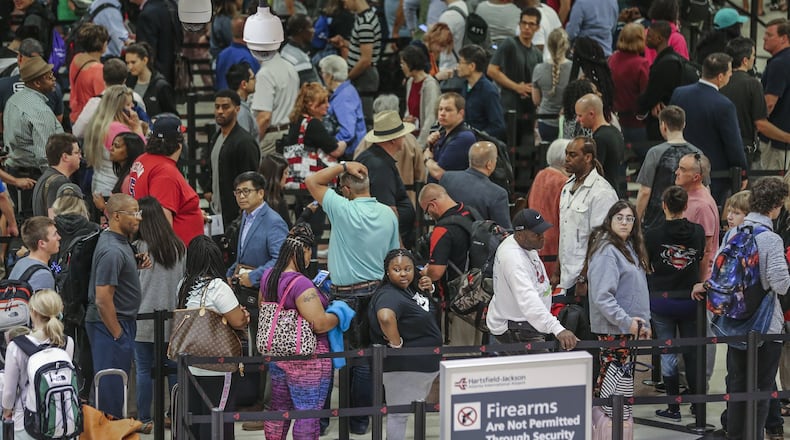Big cities are gaining while smaller towns are losing when it comes to airline service, according to an industry report by Airlines Council International.
Some smaller airports are shrinking in passenger traffic as large airports grow even larger, ACI said its World Airport Traffic Report shows.
The airport "mega-hubs" of the world grew 5.5 percent year-over-year in 2016, according to ACI.
Hartsfield-Jackson International, the world's busiest airport, continues to grow, though not as fast as hubs in Asia and other places around the world.
Meanwhile, 27.4 percent of small airports lost traffic over the last 10 years, according to ACI. That includes airports that started with fewer than 1 million passengers 10 years ago.
In contrast, Hartsfield-Jackson's passenger traffic has grown from 84.8 million passengers in 2006, the year it opened its fifth runway to boost the airport's capacity, to more than 104 million passengers in 2016. That's a nearly 30 percent increase over the 10-year period.
Angela Gittens, director general of ACI World and a former Hartsfield-Jackson general manager, said in a written statement that despite gains for major city hubs, "the downside of airline capacity shifts is that a proportion of smaller regional airports have either stagnated or experienced a reduction in nonstop destinations between cities."
Smaller airports have lost ground as carriers like Delta Air Lines reduce their fleet of smaller regional planes often used to serve smaller towns. Those efforts are aimed to increase efficiency by operating larger, more fuel-efficient jets that can handle more passengers per flight.
Southwest Airlines, which acquired AirTran Airways in 2011, discontinued service on some of AirTran's routes including some of the smaller markets it served. Southwest operates an all-Boeing 737 fleet, and does not fly smaller planes or contract with regional carriers often used to serve smaller cities.
"It is important to highlight that the reason smaller airports remain in operation hinges on the fact that they contribute to the local, social and economic development of their surrounding communities," Gittens said. "Strategies to ensure their sustainability are important if we are to have a robust aviation system.
ACI's report shows how Hartsfield-Jackson retained its status as the world's busiest airport last year, but that some of the fastest-growing airports are in other regions around the world.
New Delhi; Seoul; Kunming, China; Barcelona; Mumbai, Taipei; Shanghai; Amsterdam; Chengdu and Guangzhou were the fastest growing large airports in 2016, according to ACI.
So far this year, Hartsfield-Jackson’s passenger traffic is growing by 1 percent through August. As Delta continues to move toward larger airplanes to replace smaller ones, reducing the number of flights needed to carry the same number of passengers, Hartsfield-Jackson’s flight count is shrinking by about 1.5 percent for the year through August.
Rival Chicago O'Hare has also seen a nearly 1.5 percent decline in flights for the year through August.
Looking at passenger counts, Beijing was the world’s second-busiest airport last year with 94 million passengers and 5 percent growth, followed by Dubai with 84 million passengers and 7.2 percent growth.
MYAJC.COM: REAL JOURNALISM. REAL LOCAL IMPACT.
AJC Business reporter Kelly Yamanouchi keeps you updated on the latest news about Hartsfield-Jackson International Airport, Delta Air Lines and the airline industry in metro Atlanta and beyond. You'll find more on myAJC.com, including these stories:
Never miss a minute of what's happening in local business news. Subscribe to myAJC.com.
About the Author
Keep Reading
The Latest
Featured



